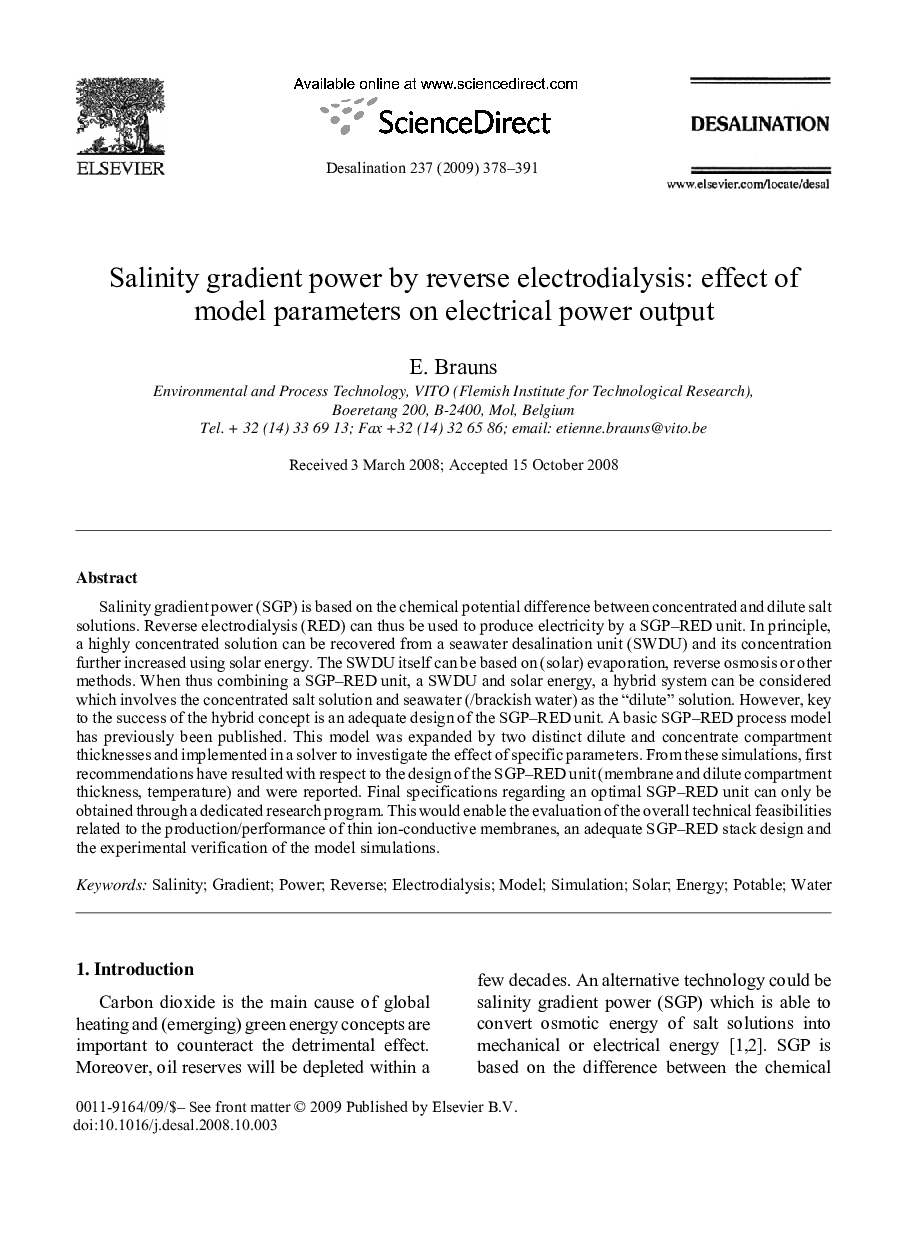| کد مقاله | کد نشریه | سال انتشار | مقاله انگلیسی | نسخه تمام متن |
|---|---|---|---|---|
| 627008 | 1455453 | 2009 | 14 صفحه PDF | دانلود رایگان |

Salinity gradient power (SGP) is based on the chemical potential difference between concentrated and dilute salt solutions. Reverse electrodialysis (RED) can thus be used to produce electricity by a SGP-RED unit. In principle,a highly concentrated solution can be recovered from a seawater desalination unit (SWDU) and its concentration further increased using solar energy. The SWDU itself can be based on (solar) evaporation, reverse osmosis or other methods. When thus combining a SGP-RED unit, a SWDU and solar energy, a hybrid system can be considered which involves the concentrated salt solution and seawater (/brackish water) as the "dilute" solution. However, key to the sucess of the hybrid concept is an adequate design of the SGP-RED unit. A basic SGP-RED process model has previously been published. This model was expanded by two distinct dilute and concentrate compartment thicknesses and implemented in a solver to investigate the effect of specific parameters. From these simulations, first recommendations have resulted with respect to the design of the SGP-RED unit (membrane and dilute compartment thickness, temperature) and were reported. Final specifications regarding an optimal SGP-RED unit can only be obtained through a dedicated research program. This would enable the evaluation of the overall technical feasibilities releated to the production/performance of thin ion-conductive membranes, an adequate SGP-RED stack design and the experimental verification of the model simulations.
Journal: Desalination - Volume 237, Issues 1–3, February 2009, Pages 378-391